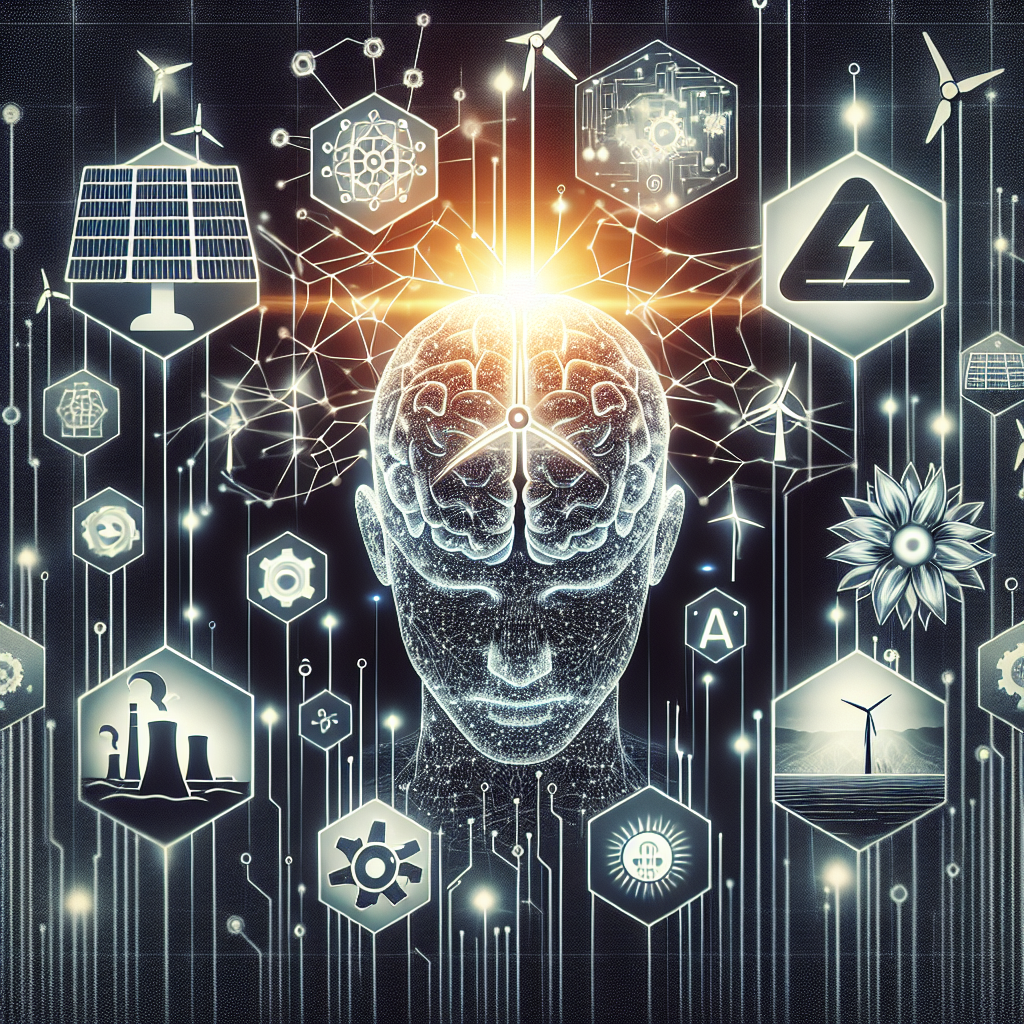In recent years, the push for renewable energy sources has been gaining momentum as the world looks for sustainable solutions to combat climate change. However, the integration of renewable energy sources into the existing energy distribution networks poses a unique set of challenges. One major challenge is the intermittent nature of renewable energy sources such as solar and wind, which can lead to fluctuations in energy supply and demand. This can create instability in the grid and impact the reliability and efficiency of the energy distribution network.
To address these challenges, artificial intelligence (AI) solutions are being increasingly utilized to optimize energy distribution networks in renewables. AI technologies such as machine learning, predictive analytics, and optimization algorithms can help utilities and grid operators better manage and balance energy supply and demand, improve grid stability, and maximize the integration of renewable energy sources.
One key application of AI in optimizing energy distribution networks in renewables is in forecasting energy generation from renewable sources. By analyzing historical data and real-time weather conditions, AI algorithms can provide accurate predictions of solar and wind power generation. These forecasts can help grid operators anticipate fluctuations in energy supply and demand, and make informed decisions to optimize the distribution of energy in the grid.
Another important application of AI in energy distribution networks is in grid optimization. AI algorithms can analyze vast amounts of data from sensors, smart meters, and other grid devices to identify patterns and anomalies in the grid. This information can be used to optimize grid operations, improve energy efficiency, and reduce energy losses. AI can also help in predicting equipment failures and maintenance needs, allowing utilities to proactively address issues before they lead to disruptions in the grid.
Furthermore, AI can be used to optimize energy storage systems in renewables. Energy storage is crucial for balancing the intermittent nature of renewable energy sources and ensuring a stable supply of energy to the grid. AI algorithms can optimize the charging and discharging of energy storage systems based on real-time energy demand and generation patterns, maximizing the efficiency and performance of these systems.
Overall, AI solutions offer a range of benefits for optimizing energy distribution networks in renewables, including improved grid stability, increased energy efficiency, and better integration of renewable energy sources. By leveraging AI technologies, utilities and grid operators can overcome the challenges posed by the growing share of renewables in the energy mix and transition to a more sustainable and resilient energy system.
FAQs:
Q: How can AI help in forecasting energy generation from renewable sources?
A: AI algorithms can analyze historical data and real-time weather conditions to provide accurate predictions of solar and wind power generation. These forecasts can help grid operators anticipate fluctuations in energy supply and demand and optimize the distribution of energy in the grid.
Q: What are the benefits of using AI in optimizing energy distribution networks in renewables?
A: AI solutions offer benefits such as improved grid stability, increased energy efficiency, and better integration of renewable energy sources. AI can help utilities and grid operators overcome the challenges posed by the intermittent nature of renewables and transition to a more sustainable and resilient energy system.
Q: How can AI optimize energy storage systems in renewables?
A: AI algorithms can optimize the charging and discharging of energy storage systems based on real-time energy demand and generation patterns. This helps maximize the efficiency and performance of energy storage systems, ensuring a stable supply of energy to the grid.
Q: What are some examples of AI technologies used in optimizing energy distribution networks in renewables?
A: Some examples of AI technologies used in optimizing energy distribution networks include machine learning, predictive analytics, and optimization algorithms. These technologies help utilities and grid operators better manage energy supply and demand, improve grid stability, and maximize the integration of renewable energy sources.

